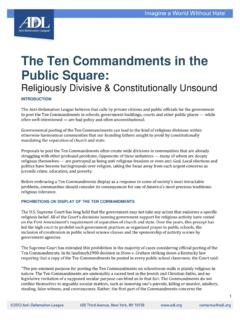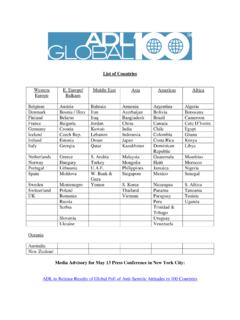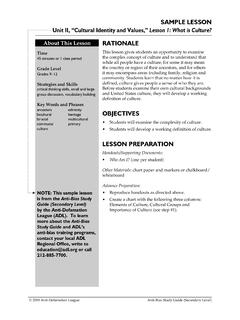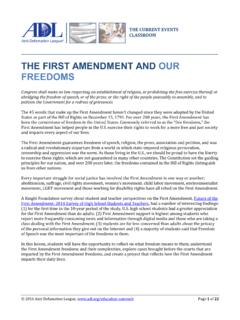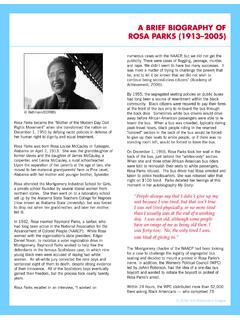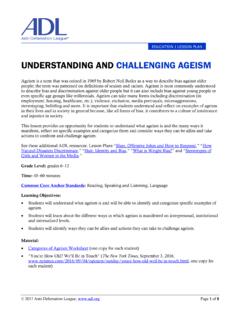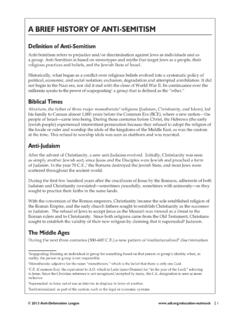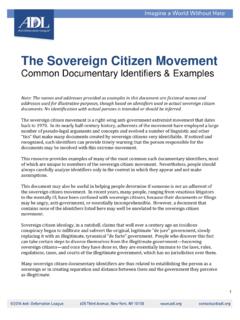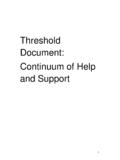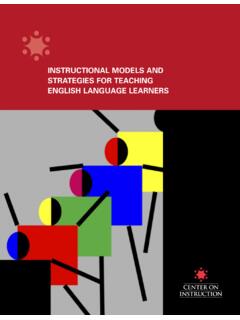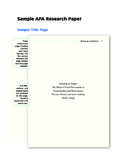Transcription of PERSONAL SELF-ASSESSMENT
1 2007 Anti-Defamation League PERSONAL SELF-ASSESSMENT OF ANTI-BIAS BEHAVIOR Directions: Using the rating scale of NEVER to ALWAYS, assess yourself for each item by placing an X on the appropriate place along each continuum. When you have completed the checklist, review your responses to identify areas in need of improvement. Create specific goals to address the areas in which you would like to improve. 1. I educate myself about the culture and experiences of other racial, religious, ethnic and socioeconomic groups by reading and attending classes, workshops, cultural events, etc. Never Always 2. I spend time reflecting on my own upbringing and childhood to better understand my own biases and the ways I may have internalized the prejudicial messages I received. Never Always 3. I look at my own attitudes and behaviors as an adult to determine the ways they may be contributing to or combating prejudice in society.
2 Never Always 4. I evaluate my use of language to avoid terms or phrases that may be degrading or hurtful to other groups. Never Always 5. I avoid stereotyping and generalizing other people based on their group identity. Never Always Provided by: ADL s Education Division, A WORLD OF DIFFERENCE Institute 2007 Anti-Defamation League 6. I value cultural differences and avoid statements such as I never think of you as_____, which discredits differences. Never Always 7. I am comfortable discussing issues of racism, anti-Semitism and other forms of prejudice with others. Never Always 8. I am open to other people s feedback about ways in which my behavior may be culturally insensitive or offensive to others. Never Always 9. I give equal attention to other people regardless of race, religion, gender, socioeconomic class or other difference. Never Always 10.
3 I am comfortable giving constructive feedback to someone of another race, gender, age or physical ability. Never Always 11. The value of diversity is reflected in my work, which includes a wide range of racial, religious, ethnic and socioeconomic groups, even when these groups are not personally represented in my community. Never Always 12. I work intentionally to develop inclusive practices, such as considering how the time, location and cost of scheduled meetings and programs might inadvertently exclude certain groups. Never Always 13. I work to increase my awareness of biased content in television programs, newspapers and advertising. Never Always 2007 Anti-Defamation League 14. I take time to notice the environment of my home, office, house of worship and children s school, to ensure that visual media represent diverse groups, and I advocate for the addition of such materials if they are lacking.
4 Never Always 15. When other people use biased language and behavior, I feel comfortable speaking up, asking them to refrain and stating my reasons. Never Always 16. I contribute to my organization s achievement of its diversity goals through programming and by advocating for hiring practices that contribute to a diverse workforce. Never Always 17. I demonstrate my commitment to social justice in my PERSONAL life by engaging in activities to achieve equity. Never Always Areas of growth: Goals: This activity was adapted from Commitment to Combat Racism by Dr. Beverly Tatum & Andrea Ayvazian in White Awareness: Handbook for Anti-Racism Training by Judy H. Katz. 1978 by the University of Oklahoma Press, Norman. Reprinted by permission of the publisher. All rights reserved.
